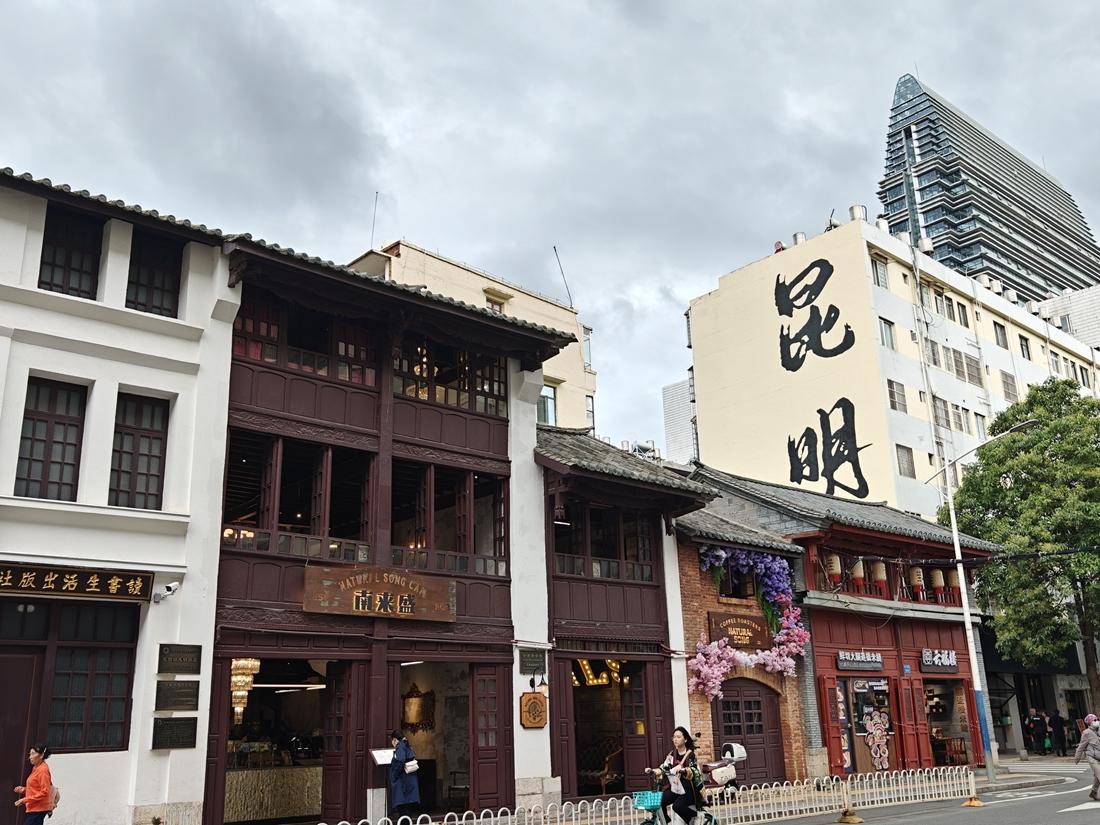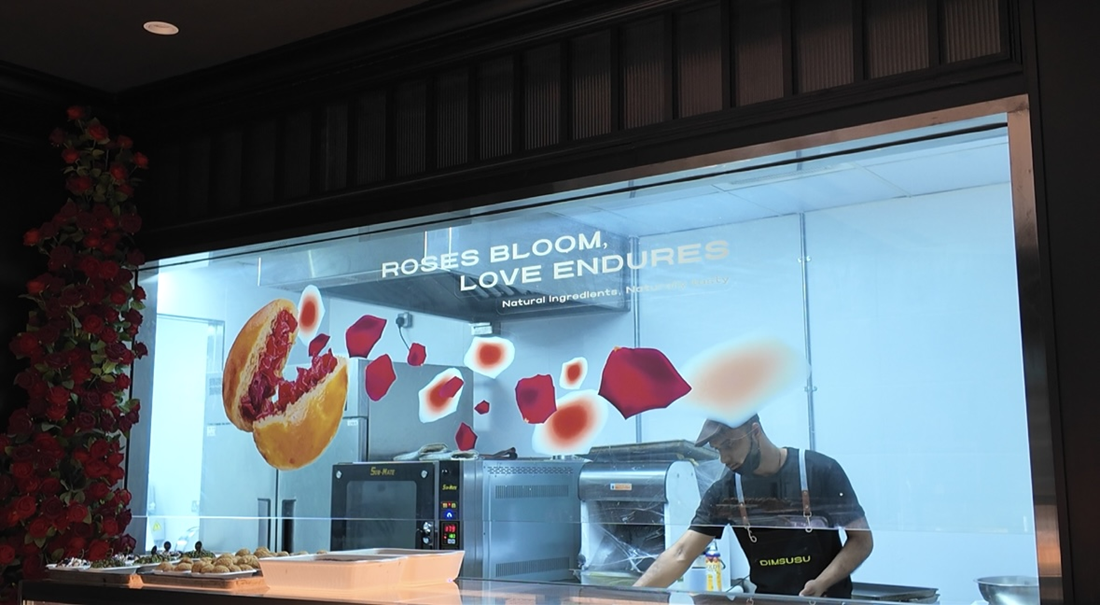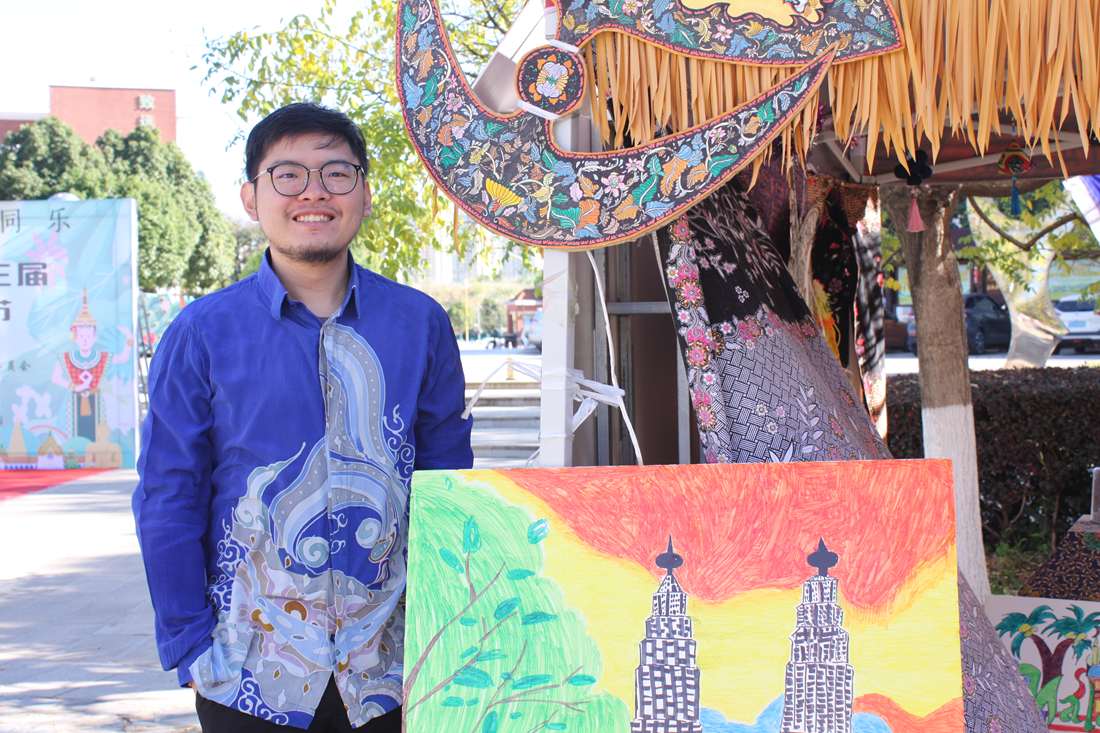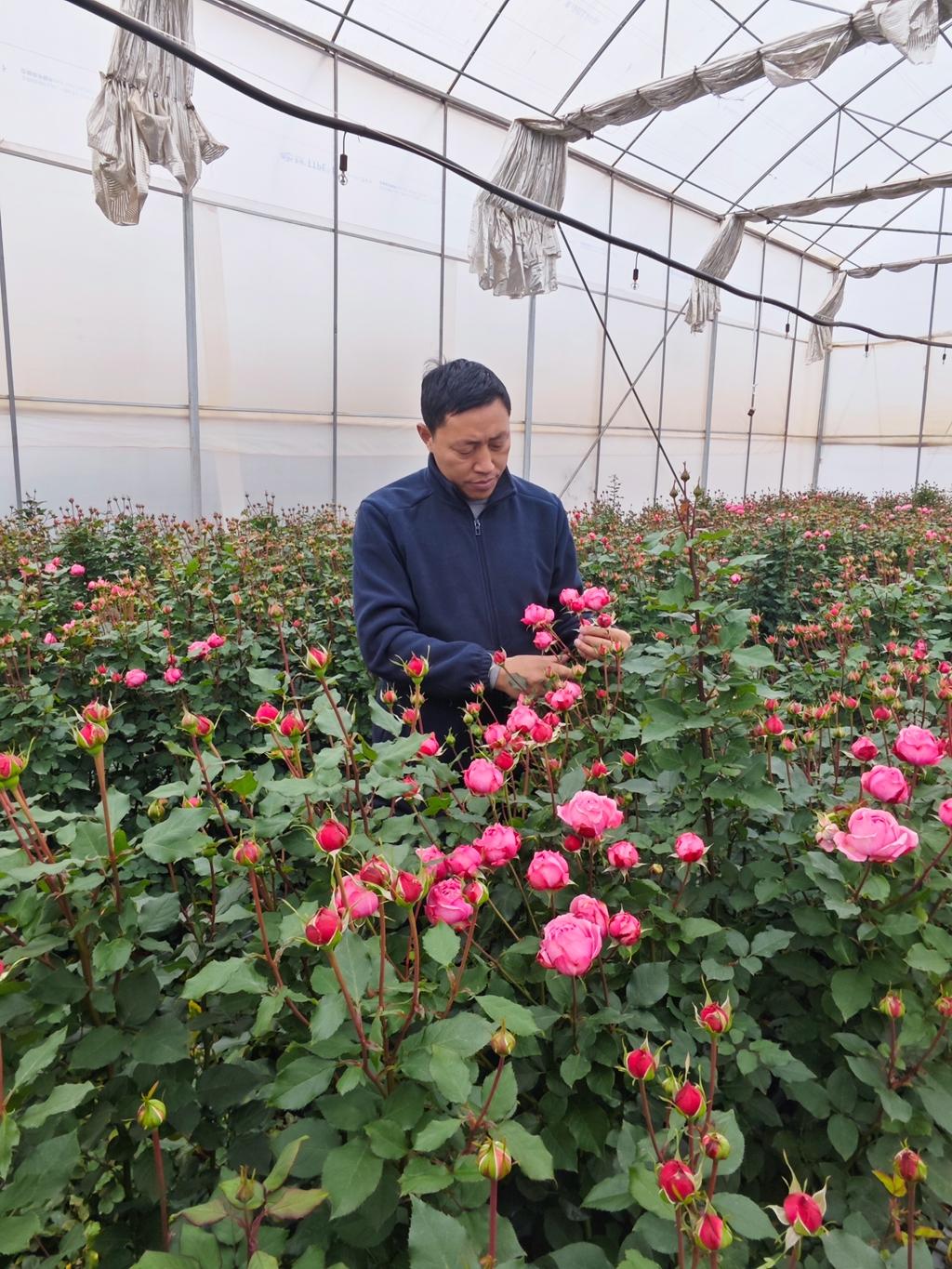See Xi: China and Asean countries see vibrant economic, trade and cultural ties
China and Southeast Asian nations are close neighbors, geographically linked by mountains and rivers and deeply intertwined culturally. Throughout history, the ancient Silk Road built vital bridges for civilizational exchange. This spirit of good-neighborliness and friendship is not only etched in historical records and ancient relics but is also deeply integrated into the fabric of daily life.
In recent years, economic, trade, and cultural exchanges between China and Southeast Asian countries have become increasingly vibrant. From seamless collaborations at exhibitions to visa-free travel fostering new tourism trends; from Vietnamese rice noodles perfectly paired with Yunnan dipping sauce to Cambodian mangoes becoming a new favorite in Chinese supermarkets; from Malaysian durian orchards welcoming Chinese tourists to dynamic campuses nurturing new talents—the joint construction of the Belt and Road Initiative has ignited fresh opportunities for mutual benefit and win-win cooperation. In this issue, we will invite you witness the continuous unfolding of vivid stories of close connections between neighbors.
Rice noodles bridging mountains and seas
China and various Southeast Asian countries share numerous commonalities in their culinary cultures. In southern China, rice and its cultivation culture, aided by tools like stone mills and cooking techniques such as steaming and boiling, transform into various rice-based foods differing in shape, texture, and flavor. Rice noodles are a unique presence among them. Across Southeast Asia, the shared essence of rice cultivates a spectrum of distinct culinary traditions. As chopsticks and spoons delicately twirl, slender rice noodles, infused with a symphony of sour, spicy, and fresh flavors, awaken the palate. This delightful experience transcends mere culinary enjoyment, serving as a vibrant and far-reaching dialogue between diverse civilizations.

Vietnamese travel to the Jiaozi snow mountain in central Yunann's Kunming city.
Vietnamese rice noodles, a traditional staple and beloved daily delicacy, are intrinsically linked to Vietnam’s long-standing rice cultivation civilization. Hailing from an overseas Vietnamese family, Feng Juan serves Vietnamese grilled pork rice noodles at her small restaurant. This beloved dish draws food enthusiasts from around the world and also offers a comforting taste of home for Vietnamese friends.
Living abroad, Muhammad Akma, the Malaysian Consul General in Kunming, often finds comfort in the memory of a bowl of Laksa from his homeland. He recalls its rich coconut aroma blending with the fresh and spicy soup base, the intensity of shrimp paste complementing the fresh scent of lemongrass. Accompanied by various ingredients, it truly embodies an authentic Malaysian flavor.
The Orussey Kuy Teav restaurant in Phnom Penh, Cambodia, boasts a history of over 40 years, drawing a steady stream of diners daily. A bowl of Cambodian Kuy Teav artfully blends rice noodle techniques with roots in China’s Chaoshan region with the abundant local ingredients of Cambodia. This harmonious fusion reflects the culinary ingenuity and shared heritage of both nations. Every bite serves as a delicious testament to the enduring connection between Cambodia and China.
Shared flavors, enduring bonds
Golden, plump Cambodian mangoes now grace Chinese tables. Vietnamese coffee and bread fill the streets of Kunming with their inviting aroma. And the shared sweetness of Malaysian durians delights palates in both nations. These exquisite flavors, bite by bite, paint a delicious picture of the deepening bonds and vibrant cultural exchange between China and its Southeast Asian neighbors.

Ho Chi Minh’s former residence on Huashan South Road in Kunming
The Ho Chi Minh’s former residence on Huashan South Road in Kunming draws numerous visitors from both China and Vietnam. Adjacent to it stands the Nanlaisheng Cafe, a historic Kunming establishment. The coffee and baguette bread served here evoke fond memories for long-time residents, while the cafe itself quietly bore witness to Ho Chi Minh’s years of revolutionary activities in China. Today, many young people frequent the cafe, eager to connect with its deep historical significance.
In a durian orchard in Raub, Pahang, Malaysia, Liew Chun Sing, a third-generation Chinese durian expert from OVD Agricultural Land Development Sdn Bhd, was meticulously inspecting the growth of the durian trees. “Caring for these trees is like raising children,” he said. “Every fruit embodies the persistence of our ancestors.”
Over 600 years ago, during his visit to Malaysia, the ancient Chinese navigator Zheng He encountered a tropical fruit he described as “with thorny skin, sweet and delicious.” His entourage named it “Dueryan.” More than six centuries later, Liew Chun Sing’s family business, much like many local Chinese businesses, not only thrives by cultivating this crop but also regards it as a profound symbol of the enduring friendship between China and Malaysia.
Currently, while OVD primarily cultivates Musang King durians, it also develops eco-tourism centered around the durian orchard.
“Our aim is for visitors to experience the authentic sweetness of durian, tasting it directly from the branch and allowing that delight to resonate deeply,” said Angie, an executive at OVD, her voice brimming with confidence in the Chinese market’s vast potential. “We are eager to collaborate with Chinese enterprises to integrate the latest agricultural technologies, bring even more high-quality Malaysian durian products to China, and introduce the exquisite taste of Musang King to a wider audience.”
Malaysia is home to over 200 durian varieties. Beyond the widely recognized Musang King, other notable types like Black Thorn, Sultan King, and Kampung durians are also highly sought after. Chan Ming Fung, CEO of Malaysia’s Enest Group Berhad, explained that his company has been comprehensively engaged in the entire durian industry chain since 2015, with products already reaching markets in China, Singapore, and many other nations. “Now that fresh Malaysian durians are approved for entry into the Chinese market,” he said, “we will accelerate our international market expansion, focusing primarily on China. Only by deeply integrating into the global market can Malaysian durian, the ‘King of Fruits,’ truly flourish.”
In May 2021, fresh Cambodian mangoes made their first shipment to China, quickly becoming a “new favorite” on Chinese consumers’ tables. Kampong Speu province is one of Cambodia’s main mango-producing regions. When mangoes enter their optimal harvesting period, the various plantations become busy.
Chhing Chamroeun (transliteration), General Manager of Cambodia’s Ploy Green Land (PGL) company, explained that fresh mangoes are transported to their workshop for washing, sorting, and packaging. She noted that these mangoes are swiftly moved to China via cold chain, effectively opening up new markets. In 2018, Ms. Chamroeun first visited Kunming to attend the China-South Asia Expo. Through the expo, she recognized the promising potential for Cambodian agricultural products to enter the Chinese market, leading her to attend the event multiple times since. She further detailed that in addition to agricultural product trade, PGL also provides consulting services to foreign investors, including guidance on modern agriculture and infrastructure development. Ms. Chamroeun expressed her eagerness for the continuous expansion of business with China, especially fostering cooperation with Yunnan.
Yunnan flavors delight diners in Kuala Lumpur
China and Malaysia share a bond as close maritime neighbors. Today, China-Malaysia relations have entered a promising new “golden 50 years,” with burgeoning cooperation poised to unlock fresh opportunities for the development of both nations and the broader region. In recent years, exchanges and interactions between Yunnan and Malaysia have grown increasingly vibrant and substantive. Numerous Yunnan brands have journeyed across land and sea, successfully establishing themselves and thriving in Malaysia. These brands have not only introduced distinctive products and services but also forged new pathways for economic, trade, and cultural exchange between China and Malaysia.

The bakery in Putrajaya, Malaysia, specializes in pastries with Yunnan rose filling.
In mid-April, our reporters visited Kuala Lumpur, the capital of Malaysia. They discovered many Yunnan elements and witnessed the innovation and wisdom of Yunnan enterprises venturing abroad.
Our reporters’ first stop was a Yunnan-style restaurant. The owner, originally from Dali Bai Autonomous Prefecture, specializes in various types of rice noodles, noodle soups, and rice dishes with toppings. The rice noodles are silky and delicious, often served with tender, flavorful stewed beef slices, making them a highly recommended dish for many patrons. The restaurant also features Yunnan specialty snacks such as fried potatoes and grilled tofu. These dishes are prepared using traditional Yunnan methods, with particular attention to the dipping sauces and seasoning to maintain authentic flavors. “I’m a regular here,” praised a local Kuala Lumpur diner. “The beef rice noodles feature a delicious soup, and the dumplings and roasted meat are also my favorites.”
Additionally, a bakery in Putrajaya, Malaysia, specializing in pastries with Yunnan rose filling, has garnered widespread acclaim across various social media platforms. This is “Dimsusu,” the international brand of the Yunnan food enterprise Diansusu. Situated in a large shopping mall, the bakery sees customers arriving for desserts as soon as it opens its doors at 10 AM. An entire wall adorned with roses outside the store has also become a popular photo spot. The store boasts a wide array of products, with its most distinctive offering being the fresh flower pastry filled with fragrant rose petals. It also features yolk pastry, pineapple pastry, mung bean cake, and many other Chinese pastries. A baker from Qujing City, busy preparing fresh pastries for the day’s business, shared: “All the rose ingredients used in the store come directly from Yunnan, and product development is also completed there. Currently, all our local staff are hand-trained by Yunnan bakers who came to Malaysia.” He added that the best-selling rose pineapple pastry, while retaining its signature rose fragrance, also incorporates local dietary preferences. Its rich texture has successfully opened up the overseas market, allowing locals to experience the unique delight of eating flowers. “We are planning more branches across Malaysia and are very much looking forward to Diansusu’s performance abroad,” he added.
Another emerging brand, Sharepopo, drawing on Yunnan’s unique local characteristics, also opened in a Kuala Lumpur shopping mall last year. It creatively combines Yunnan’s distinctive wild olive with various beverage concoctions, offering a unique taste profile that stands apart from traditional local drinks and provides consumers with novel options. Additionally, catering to Southeast Asian dietary preferences, it has launched localized products such as mango milkshakes, chocolate milkshakes, and chilled mango sago cream with pomelo. A staff member noted that customers are curious about this beverage, which is slightly tart yet boasts a pleasant aftertaste. Among their offerings, the Jasmine-flavored olive tea is a top choice for many consumers.
By lunchtime, Yunhaiyao (Mystic South-Yunnan Ethnic Cuisine), the Yunnan chain restaurant in downtown Kuala Lumpur, was already bustling. Upon entering, guests are immediately greeted by indigo tie-dye wall paintings, a striking hallmark of the Yunnan brand. “Crossing-the-Bridge Rice Noodles” has become a quintessential Yunnan specialty. Its steaming hot broth, prepared using traditional Yunnan simmering techniques, and carefully selected side dishes that meet original ingredient standards, create a delightful surprise for diners’ palates. Dai-style grilled meat, distinguished by its unique spice blend, meticulously prepared dipping sauces, and expert grilling techniques, is celebrated as a “magical delicacy” by Malaysian diners. The foundation of this authentic flavor lies in Yunnan brands’ profound dedication to their ingredient supply chain—from cultivation and cold chain transportation to product quality control, cooking methods, and service. This meticulous oversight ensures that the taste of home, though thousands of miles away, remains pure and authentic. Today, this Yunnan restaurant stands as a popular landmark on Kuala Lumpur’s culinary map, drawing in both local diners and international tourists.
The growth story of Yunnan brands in Kuala Lumpur vividly exemplifies mutual appreciation and shared prosperity. Beyond the culinary sector, Yunnan enterprises across diverse fields—including agriculture, retail, construction, logistics, e-commerce, and manufacturing—are likewise establishing strong roots in Malaysia, consistently fostering win-win cooperation and deepening mutual understanding and affinity.
Finding fulfillment in Yunnan
Yang Kangsen, originally from Penang, Malaysia, came to China in 2015 and pursued further studies at Peking University and Jinan University. He is now a lecturer at Yunnan Minzu University.

Yang Kangsen is native to Penang, Malaysia.
As one of the first universities in Yunnan Province to offer a Malay language major, Yunnan Minzu University actively collaborates with Malaysian universities through initiatives such as student exchanges and academic partnerships. Its annual South Asia and Southeast Asia Cultural Festival allows students to experience diverse cultures immersively. According to Yang, “The China (Yunnan)-Malaysia Higher Education Dialogue, co-organized by Yunnan Minzu University, has established a platform for professional exchange among faculty from universities in both countries.”
Yang often incorporates innovative teaching methods into his daily instruction. For example, he simulates a “China-ASEAN Youth Summit” in class, encouraging students to move beyond textbooks and consider issues from diverse perspectives. He also frequently encourages students to engage in practical social activities, such as recommending them to tourist attractions to share local stories in Malay, which are then posted on social media. “I learned about Yunnan through books since I was little, and having spent almost ten years in China, I’ve found Yunnan to be a place where you can settle down and focus on your work with a calm mind,” he said.
Such a “place where the heart feels at peace” is increasingly attracting Malaysian students to study in Yunnan. Zheng Jingwen, a Malaysian international student pursuing a master’s degree in International Business at the School of Economics, Yunnan University, shared her experience: “Here, diverse cultures blend, and the natural scenery is beautiful. Yunnan’s rice noodles remind me of the rice vermicelli from my hometown, and the sweet flower cakes evoke memories of Malaysian fragrant biscuits. The festive atmosphere in Yunnan also makes me feel very much at home.” She added that Yunnan University’s strong reputation in Southeast Asia, coupled with Yunnan’s geographical proximity to Malaysia and vibrant cultural exchanges, are significant reasons why many Malaysian students choose to study there.
“In my daily life, I’ve encountered many heartwarming things,” Zheng said happily. “When I first enrolled, Chinese classmates showed me around campus and played badminton with me. I also participated in a ‘watch Thai dramas to learn Thai’ activity, which allowed me to not only learn a new language but also make many friends. My study life in Yunnan has been rich and vibrant; I’ve gained a great deal and look forward to more wonderful experiences in the future.”
Short videos convey friendship
“It turns out Vietnamese and Chinese have a lot in common,” remarked Vietnamese girl Bui Thi Tuyen laughingly in fluent Chinese, as “bullet comments” streamed across her phone screen. “That’s exactly what I want to convey—Vietnamese and Chinese cultures inherently have intricate connections.” Originally from Lao Cai, Vietnam, Bui spent a decade establishing roots in Yunnan. She then began using short videos as a bridge to connect netizens from both countries, allowing them to experience the warmth of each other’s daily lives.

Vietnamese girl Bui Thi Tuyen
In 2015, after graduating from high school, Bui chose to study Chinese abroad, enrolling at Hekou Vocational High School in Yunnan. “They had Chinese language classes specifically for Vietnamese people here, and I believed that learning Chinese would make finding a job easier,” she explained. A year later, her excellent HSK (Hanyu Shuiping Kaoshi—Chinese Proficiency Test) scores earned her admission to Honghe University, where she majored in Chinese Language and Literature. Upon completing her bachelor’s degree, she continued her academic journey at Yunnan University, pursuing a master’s program in Journalism and Communication.
Bui made this choice because she saw the significant potential of short videos. As she explained, “When filming short videos, I found that the camera could break down language barriers. I wanted more people to understand Vietnamese and Chinese stories and experience Vietnamese-Chinese friendship.” Her “Yunnan daily life” videos—showcasing everything from celebrating the Water Splashing Festival in Xishuangbanna and her 30-yuan flower-buying adventure at Dounan Flower Market, to university students bravely navigating job fairs and taking her mother on a memorable tourist trip to Lijiang—quickly sparked heated discussions across social media platforms.
Among the various videos filmed over the years, one that left a deep impression on Bui was her visit to Nghe An, Vietnam, to trace the footsteps of Wang Bo, a Tang Dynasty (618-907) Chinese poet.
“In 2022, my friends and I traveled from Lao Cai Province to Nghi Xuan Commune in Nghe An Province,” Bui recalled. “We pieced together fragmented online clues and navigated our way by walking and asking for directions. After the video went online, many Chinese netizens commented, ‘So the author of ‘Preface to the Pavilion of Prince Teng’ also left his footprints in Vietnam.’ At that moment, I truly felt how the camera could connect history.”
This summer, as Bui approaches graduation, she plans to remain in China and pursue a career as a Vietnamese language teacher. “It’s been ten years, and Yunnan has long become my second home,” she said. “In the future, I want to use my camera to help more people understand the stories of Vietnamese-Chinese friendship.”
Yunnan flowers bloom in Cambodia
Daily, local flower retailers stream into the Kunming Dianwang Flower Co., Ltd.’s Eco-Greenville cultivation base, just outside downtown Phnom Penh, Cambodia, to replenish their stock. After purchasing another batch of moth orchids, Sokha (transliteration), a frequent customer and owner of a flower shop in downtown Phnom Penh, explained: “The potted plants here are diverse in variety, excellent in quality, and abundant in quantity. They also have specialists who teach maintenance techniques, making them very popular among local retailers and consumers.”

Fu Chao, General Manager of Dianwang Flower
“We’ve been on this cooperation journey for over 10 years, evolving from importing fresh cut flowers to cultivating and planting varieties adapted to the local climate,” said Fu Chao, General Manager of Dianwang Flower. He explained that since 2014, the company has been exporting fresh flowers from Kunming to Cambodia, with export volumes surpassing 1,500 tons by 2024. These flowers are distributed through various flower shops, enriching the lives of Cambodian consumers. “Cambodians frequently use fresh flowers to decorate weddings, and our Yunnan flowers have been part of countless joyful celebrations for newlyweds.”
As the flower business flourished, Fu began to envision establishing Yunnan’s floriculture in Cambodia. With the deepening agricultural cooperation between Yunnan and Cambodia, his idea quickly became a reality. In 2021, supported by the Yunnan Academy of Agricultural Sciences, Fu partnered with Cambodia’s Ministry of Agriculture, Forestry and Fisheries to create a demonstration flower cultivation base in Phnom Penh. They introduced high-quality, heat-resistant flower varieties such as roses, gerberas, and moth orchids for local demonstration planting. Concurrently, they conducted cultivation technique training, offering over a hundred annual opportunities for Cambodian agricultural experts, university students studying agriculture, and aspiring growers.
From 2021 to 2024, Dianwang Flower completed the construction of the China-Cambodia Flower Technology Promotion Center, a project initiated by the Kunming Municipal Bureau of Science and Technology. This brought advanced floriculture technologies to Cambodia, enabling Yunnan’s flowers to take lasting root and thrive.
Old friends, new stories
When contacted by our reporter, Jiang Hong, Chairman of Yunnan Good-trip International Travel Group Co., Ltd., was in Kuala Lumpur discussing cruise tourism business. “Having worked in the Malaysian market for 15 years,” Jiang Hong said excitedly, “I’ve increasingly observed that tourism exchanges and cooperation between China and Malaysia, and specifically between Yunnan and Malaysia, are flourishing and evolving rapidly. Our confidence in expanding the market has grown even stronger.”
In recent years, with flights gradually resuming and visa-free policies continuously optimizing, cross-border tourism between Yunnan and Malaysia has significantly picked up. Data from the Kunming Travel Agency Industry Association reveals that last year, travel agencies across the city organized over 20,000 Yunnan tourists to visit Malaysia and welcomed over 90,000 Malaysian tourists to Yunnan. Jiang Hong’s company also saw a corresponding rise in business volume.
“With the growing appeal of ‘sojourning in Yunnan,’ we’ve prioritized developing inbound tourism products that integrate leisure, wellness, and other distinctive features. For instance, we recently organized a Malaysian tour group of over 40 people for a highly praised hot spring wellness experience in Tengchong,” Jiang Hong explained. He further noted that with the new Dali to Kuala Lumpur route opening this year, Good-trip Travel has actively arranged tours, simplifying travel for Yunnan residents interested in coastal destinations in Malaysia. International cruises, he added, have also become a primary focus for their Malaysian market operations in recent years, offering tourists unique and diverse experiences.
“Yunnan and Malaysia have always been old friends with a history of frequent exchanges. I look forward to increased cultural and tourism cooperation to further strengthen our ties and create new shared experiences,” said Cai Yilin (transliteration), Chief Executive Officer of Tourism Selangor, Malaysia.
Selangor, with its pleasant climate, abundant natural resources, and diverse culture, boasts tourism resources that mirror many of Yunnan’s. Cai observed that many visitors to Malaysia are moving beyond short, superficial “sightseeing-only” tourism, with a growing preference for longer, more in-depth “immersive tourism.” “To meet this demand, we have launched a series of in-depth tour routes focusing on themes such as ecology, culture, art, extreme sports, and cuisine,” she said enthusiastically.
Following the implementation of the mutual visa exemption policy between China and Malaysia, the number of Chinese visitors to Malaysia has continued to grow. In 2024, Malaysia welcomed over 3.7 million Chinese tourists. Cai said, “We welcome tourists from all over China, including Yunnan, to deeply explore Selangor and experience its unique charm.”
In March this year, Cai led a delegation of nearly a hundred Malaysian tourism professionals on an 11-day visit to four Chinese cities—Kunming, Chengdu, Qingdao, and Zhengzhou—to promote Malaysian tourism. “Yunnan has always been a key gateway for Malaysia-China cooperation, and it’s also one of the most beloved Chinese tourist destinations for Malaysian visitors,” she said excitedly. She added that in recent years, with the rise of social media, more and more Malaysians have developed a longing for Yunnan’s snow-capped mountains and valleys, unique ethnic customs, and enticing cuisine. The direct flight time of approximately 4 hours between the two locations further facilitates bilateral tourism.
As 2025 marks “Visit Selangor Year,” Cai, when discussing future cooperation, stated that Selangor aims to not only attract more visitors but also pursue deeper collaboration with Yunnan in areas such as educational study tours and intangible cultural heritage.
China-Cambodian exchange visits booming
At the Southeast Asia Outbound Center of Kunming Scenery-Custom International Travel Group Co., Ltd., the phones were ringing off the hook. An Hui, the center’s director, was diligently coordinating visa and flight arrangements for a 35-person tour group. This group was preparing to depart from Kunming, flying to Siem Reap, Cambodia, to explore the awe-inspiring Angkor archaeological sites.
“Since the beginning of this year, the satisfaction and positive feedback rate for our Cambodia-bound travelers have reached 100%,” said An Hui, who has been in the tourism industry for many years and is very optimistic about the Cambodian market. He believes that Cambodia not only possesses rich tourism resources such as world heritage sites, ethnic customs, and natural scenery, but also offers high-quality supporting services that provide convenience and comfort for tourists.
In the first quarter of 2025, An Hui and his team received over 600 Chinese tourists traveling to Cambodia. With the resumption of flights and increased frequency of routes between various cities in China and Cambodia, the number of tourists in the second quarter is expected to further increase, filling An Hui and his colleagues with enthusiasm.
In Siem Reap, Cambodia, immediately after her call with An Hui, Lin Xiaoyan, General Manager of Changrong Travel Co., Ltd., began coordinating ground services. These included arranging guides, hotel bookings, vehicle logistics, and itinerary verification. Her company currently welcomes over 3,000 Chinese tourists monthly, predominantly senior tour groups, business inspection delegations, and customized niche boutique tours seeking unique experiences.
Since its establishment in 2002, Lin’s company has operated in Cambodia for over 20 years, building a wealth of experience. This extensive background enables them to meet various travel demands, such as leisure tourism, business inspections, and study tours. Lin explained, “During our busiest periods, we served over 300,000 travelers each year and managed to coordinate more than 500 tour guides.”
Lin and her team are now researching and developing tour routes to China. Thanks to the growing exchanges and cooperation between the two countries, coupled with China’s relaxed and optimized visa-free policies, a rising number of Cambodians are eager to visit China. “We hope tourism can facilitate exchange visits for people from both nations, fostering greater mutual understanding,” Lin said.
Encountering romance in Yunnan
Spring and summer brought a significant influx of Vietnamese cross-border tour groups to Yunnan, drawn by the chance to admire the flowers. For Vietnamese tourism professional Huang Xue (transliteration), this marked the beginning of her peak season.
As the manager of Vietnam’s top travel company and the brand manager of the Vietnam-Yunnan Tourism Alliance, Huang’s career took a significant turn because of Yunnan.
Huang was quick to seize a business opportunity when the Kunming-Hekou high-speed train service launched in the latter half of 2019. By year-end, she was already on an inspection trip to Yunnan. Within months, she returned to Vietnam with meticulously crafted Vietnam-Yunnan tour routes, which she then marketed to agents. “Our tourist numbers have been steadily increasing over the past few years, and the market feedback for the Yunnan route has been particularly positive,” she observed. Last year alone, Hoang’s travel agency facilitated 17,000 Vietnamese tourist visits, with the majority crossing at Hekou port to embark on their high-speed train journeys.
For Vietnamese tourists, Yunnan is beautiful in all seasons and romantic everywhere. Hoang has observed numerous stories of family, friendship, and love blossoming during her tours there. Further enhancing the travel experience, the new Nanxi River Joint Inspection Building at China’s Hekou Highway Port on the China-Vietnam border opened in May 2024. “Tourist customs clearance time has been significantly shortened, allowing them more time to enjoy their destinations,” Hoang said, smiling.
“This year’s approval by Vietnam’s National Assembly of the Lao Cai-Hanoi-Hai Phong railway project is something we are closely following,” Hoang said. “Additionally, the new direct flights from Dali to Hanoi and Ho Chi Minh City have further connected Yunnan and Vietnam.” She believes that convenient customs clearance, favorable transportation, and Yunnan’s rich and diverse tourism experiences have collectively propelled the booming Vietnam-Yunnan cross-border tourism market, ensuring its continued success.
Text by Liu Ziyu, Han Chengyuan, Shu Wen, Chang Yuan, Huang Yixian, Chen Chen, Li Ling, Wang Jingzhong, Shen Yan, Li Zha, and Zhu Hai
Translated by YNTA
Proofreading by Zu Hongbing